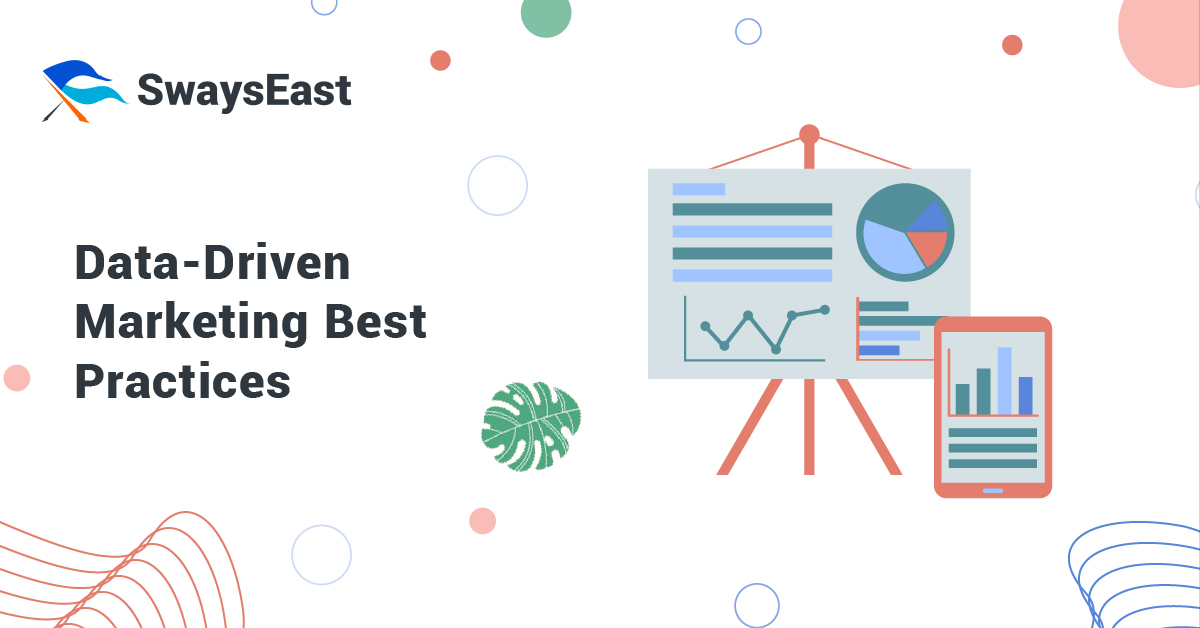In the world of Digital Marketing, data-driven marketing has emerged as one of the most important strategies that help marketers reach their desired audience and effectively deliver their message.
Data-driven marketing refers to the approach of using customer data to optimize all marketing initiatives, creative assets, and brand communications. The goal is to enhance the overall customer experience, to create greater marketing efficiency and to achieve a better ROI on marketing channels.
So, let’s take a closer look at data-driven marketing best practices that can transform your marketing strategy into a definite success.
1. Know your audience
The accuracy of your customer data is critical to the effectiveness of your data-driven marketing. You could have the most efficient data collection system in place, but if the data doesn’t accurately reflect your customers and target market, it’s useless.
Before you start working on data-driven marketing tactics for your company, be sure you know who your target market is. Conduct research on your target customers, create buyer personas, and train your teams on how to use them. You can trust your customer data once you know who they are.
2. Manage your data
Data-driven marketing is an iterative process, which means it’s always changing and growing. Not only does this necessitate high-quality data collecting, but it also necessitates data management.
Data management is essential to the success of your data-driven marketing initiatives because it allows you to have a better understanding of your consumers, analyze their data on a regular basis, evaluate new marketing and acquisition options, and save time and resources for your team.
3. Personalize the customer experience
Tailoring content and digital interactions based on demographics, online behavior, buying history, internet activities, and other information about people is the simplest but most strategic approach to arouse their curiosity or hook their attention. When done right, personalization increases customer engagement, loyalty and retention, and sales.
4. Implement an omni-channel approach
Coordinate marketing across channels based on the unique characteristics, demographics, and technology footprint of each customer. According to Marketing Evolution, here’s how you can automate an omnichannel marketing campaign:
- Determine the data sources (paid search, social media, mobile apps, podcasts, and other media) and consider how your prospects and customers will use each source in relation to the campaign’s goals.
- Establish modeling and attribution so data can be properly categorized and displayed. Marketers need high-quality data that’s available when and where it’s needed to meet customer expectations and to ensure campaign success.
- Evaluate data quality regularly to confirm the accuracy and reliability of the information. Continual checks are essential because data is constantly changing and used in innovative ways.
5. Track Marketing ROI
Combining the science of analytics with the art of communicating insights into actionable intelligence can lead to an average return of $13.01 (or an ROI of 1,301%) for every dollar spent on analytics and business intelligence solutions.
- Data should be easy to integrate with other systems and to share with internal and external sources.
- Data streams should be updated in real-time to enable quick decisions based on timely and accurate information.
- Apply visualization tools to simplify complex data that can be understood by both data scientists and non-mathematicians.
6. Take advantage of marketing automation tools
Marketing automation helps you get the most out of your marketing budget, saves time, and strengthens the relationship between marketing and sales teams. This, in turn, produces more qualified leads, increases conversion rates, and improves the efficiency of your marketing campaigns.
When selecting a marketing automation tool for your organization, consider factors such as ease of use, integrations, price, and support. By automating your marketing functions, you can start sending personalized automated emails that meet your customers where they are.
7. Stay compliant
If you don’t obey the rules or protect your customers’ privacy, all the data in the world is useless. Countries and organizations such as European Union General Data Protection Regulation (EU GDPR) and the California Consumer Privacy Act (CCPA) have been cracking down on how firms use customer data in recent years.
These regulations aren’t intended to be adversarial; rather, they’re intended to protect consumer data and make businesses accountable for how they use it. These laws, if anything, increase the transparency, trustworthiness, and effectiveness of your marketing.
Enhance the effectiveness of your Digital Marketing Campaigns
The future of marketing is data-driven marketing! Is your brand taking full advantage of this innovative technique? Get started with SwaysEast and put data-driven marketing into practice.


